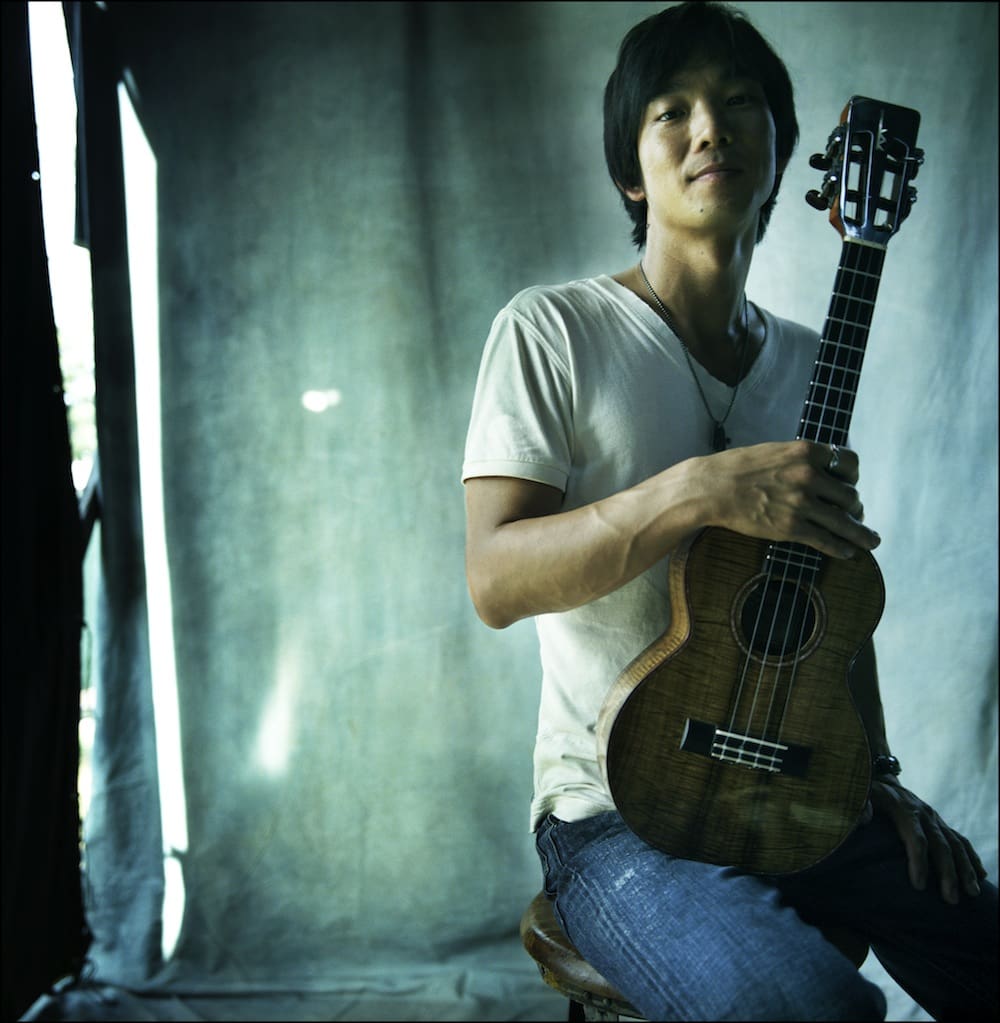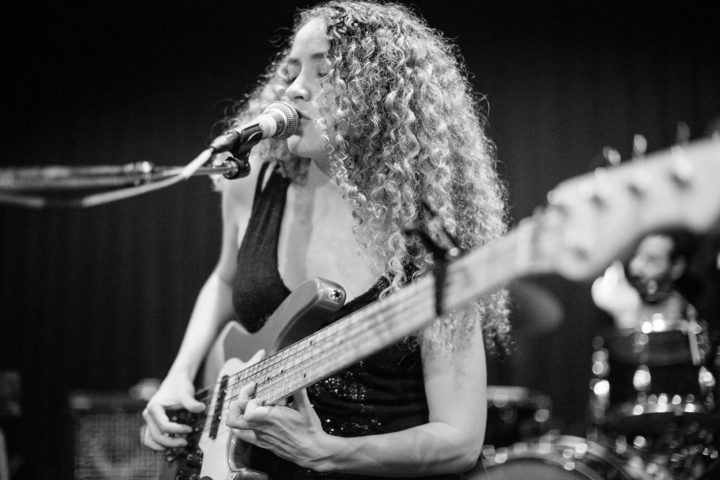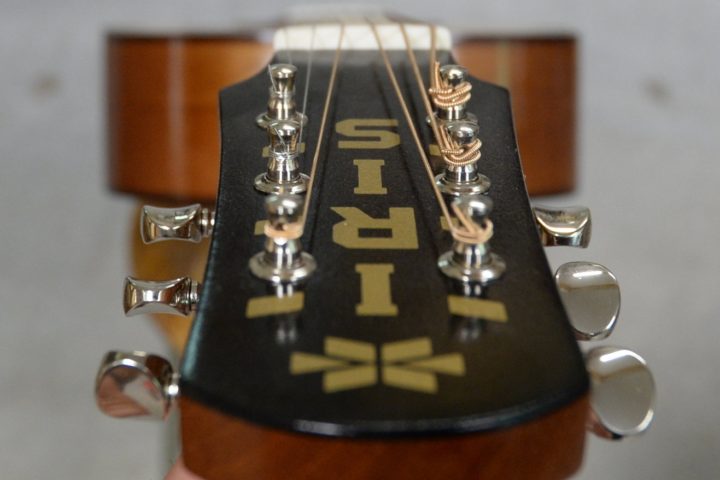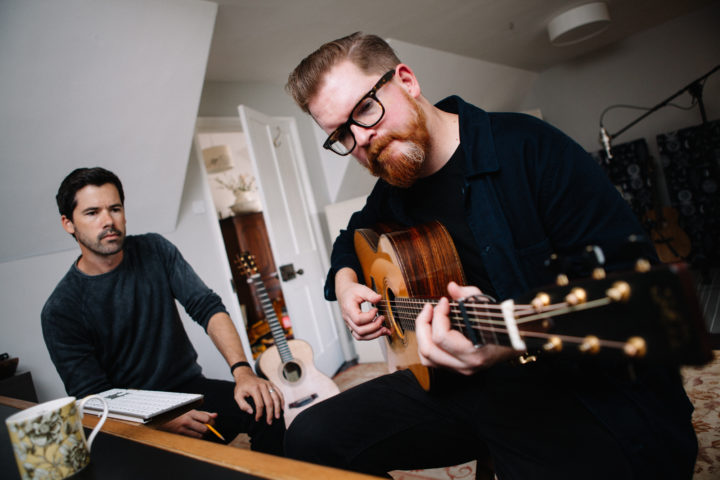Thanks to a 2005 YouTube video, Jake Shimabukuro is the most widely heard ukulele player alive today. His performance of “While My Guitar Gently Weeps” has probably inspired thousands to take up the Hawaiian instrument. It also turned him into one of the most in-demand live performers of the instrument.
Though he still looks like a teenager, at the time of this writing, Shimabukuro is 34 years old. Now in his third decade of playing the ukulele, his music continues to evolve. We decided to check in with Shimabukuro (on the phone from his home in Hawaii) and hear about his latest projects.
Fretboard Journal: Obviously, a lot of kids in Hawaii play the ukulele. When did it go from being a typical recreational activity to taking over your life?
Jake Shimabukuro: I was always very passionate about it. But when I was a kid there was no such thing as a touring solo ukulele player, so I always understood that it would be more of a hobby. I never even dreamed of doing what I’m doing today. Luckily it evolved into that. I feel very fortunate that I get to travel, perform and just play my ukulele everywhere. Yeah, since the time I was a kid, it’s always been my passion, but I never imagined that I’d be able to just do it all the time. This is really a dream come true.
FJ: I imagine a lot of kids take up the uke in Hawaii. Was there a point in your childhood where you sort of realized you taking the instrument more seriously than your peers?
JS: When I was in high school, I would pull electric guitar riffs and quote classical pieces and things like that. And I remember people just kind of looking at me and saying, “Wow, I didn’t think you could do that with the ukulele.” That’s kind of when the light bulb went off. I started dabbling in different styles of music, playing some rock tunes, and jazz tunes, classical pieces… just hinting at different things in the beginning before really tackling them with a serious arrangement.
My freshman year in high school is when I really started to get experimental. And that’s when I kind of took a little different direction and strayed away a little bit from the traditional Hawaiian music. I mean, that will always be my first love, but I really wanted to see what else was possible out there. I wanted to extend the boundaries of what ukulele music was.
FJ: It seems as though every few years, a mainstream media outlet does a piece about the ukulele renaissance going on. What advice would you give to all those folks who want to take up the uke for the first time? Do you steer them towards a particular instrument?
JS: Oh, I just tell them there’s such a range of instruments now. You can get a decent instrument for less than $100. It just all depends on how much you want to spend, but I always tell people if they’re looking for an instrument they should go to a music store. Try out as many different ukuleles as you possibly can, because there’s going to be one where when you pick it up and you play it and it’s just going to feel right. That’s the one you should get.
It’s such a simple instrument: you start with like two or three chords. You can play 100 songs with three chords. So you start your little chord collection. You just add more and more chords to your collection and, the next thing you know, you can pick up any chordbook and any songbook and you can play right through it; you don’t even have to think about it.
FJ: What was your first instrument? Does your family still have it?
JS: Yes, we do. It was a Kamaka standard ukulele and we still have it. My mom had it when she was a teenager, so that was the instrument that I started out on. Kamaka ukuleles are still the brand that I play today. I love their instruments. They’re going on a 100 years. I think they’re going on like generations of ukulele makers now.
FJ: Have you dabbled with any other builders?
JS: Yeah, I have, but Kamakas are always my go-to. They’re the standard of ukuleles. To me, they’re just amazing, because that’s the sound that I grew up listening to as a kid.
FJ: Are you a collector of ukes?
JS: No, I’m not a collector. I have about four or five instruments at home…
FJ: Compared to many uke fanatics, that isn’t many at all.
JS: Yeah. But I just have my main one that I tour with, play, practice on, record with. That’s my Kamaka four-string tenor.
FJ: Can you describe your Kamaka uke?
JS: It’s a four-string tenor ukulele. It’s made out of koa wood. The fretboard is made out of ebony and it’s a slotted head.
FJ: Do you prefer slotted headstocks?
JS: You know, it really doesn’t matter to me. However Kamaka prefers to build them, that’s how I take ‘em. I don’t know anything about making instruments, so I don’t say anything. They built them and every time they build them they’re just amazing. So I’m just honored to be playing their instruments.
FJ: I know they did a limited run of Jake Shimabukuro-signature model ukes for you a few years back. Is there talk of doing another run?
JS: I don’t know. It was pretty intense. The plan was to make 100 and 100 are all spoken for. We did kind of a lottery drawing thing, but we’re still trying to get ‘em out. We got about half the orders out, but we still need to fulfill the other 50.
FJ: They’re still making them?
JS: Because each one is handmade and it’s fully custom, they take a while. I check every single one of them, so it’s pretty time-consuming. But everyone who has received their instrument so far has just been knocked out of their seats. They’re just so happy.
I get mails from people. Some come to the shows and they bring their new signature model to the show. And they actually have me sign it. I’m like, “I can’t believe you want me to sign this beautiful ukulele.” But they’ll have me sign it.
FJ: Is that instrument pretty much a carbon copy of the one you play? Or does it have some refinements over the one you play?
JS: It doesn’t have the slotted head, but everything else is pretty much right-on.
FJ: You are such a popular ukulele player now. Do you view your career sort of as pre- and post-YouTube sensation?
JS: Definitely. YouTube has pretty much single-handedly started up a touring career for me. Ever since that YouTube video of me playing “While My Guitar Gently Weeps” at Central Park went viral, I’ve been able to tour the world nine months out of the year. It’s been just fantastic and I definitely give all the credit to YouTube and the internet. It’s been wonderful to allow artists like myself to kind of get our music out there.
FJ: Were you considering performing other tunes during that shoot?
JS: Yeah, it was just a coincidence, because at that time I just happened to finish doing an arrangement of “While My Guitar Gently Weeps.” Since we were in Central Park and next to Strawberry Fields, I thought that would be an appropriate tune to do. But I had no idea that it was going to become what it is today.
FJ: Do you have a new record out now?
JS: Yes, it’s called Peace Love Ukulele.
FJ: What’s the vibe on that one?
JS: It’s mainly original pieces. There are two covers: Leonard Cohen’s “Hallelujah” and Queen’s “Bohemian Rhapsody.” Queen’s “Bohemian Rhapsody” was a very intense arrangement. It was the result of a lot of sleepless nights. But it was great.
The other tunes are all original pieces that feature the ukulele. It features the ukulele in different settings, with different ensembles, like with the violin, with strings, with drums and bass and all of that. It’s just something a little different from the solo recordings that I had been doing up until this point.
FJ: Since you mentioned the Queen cover, I wanted to ask you: Are there some songs that you’re dying to cover but just haven’t quite figured out yet?
JS: Well, with that Queen one, I always tell people: “It’ll always be a work in progress,” because every time I play it there’s something a little different that happens. Your ears kind of gravitate toward different things.
FJ: What is your practice regime like?
JS: I put in a few hours a day, whether it’s working on stuff for a recording or a performance or if it’s for relaxation. But it’s funny, because I don’t really think of it as practice. I’ll just pick it up. You always have those moments where you’ll just be playing it and not expecting anything, but then all of a sudden you come across a nice new chord voicing or discover a new technique. That will lead you down another road which will amount to a few more original tunes or just another idea for an arrangement for a song.
FJ: How do you time your new releases? Do you follow any personal recording schedule?
JS: Until recently, my recordings have been on Sony Music in Japan. So we’ve been really pushing to release an album every year, up until this last album. The last album, Peace Love Ukulele, was my first independent release. With that one, I just kind of took my time with it, which was really nice. I don’t like pressuring myself into having to release something every year, because you want it to happen naturally; your own playing will kind of let you know when it’s time for you to release a new record.
It’s nice because you want to at least wait until you have something new to say or to present. I don’t mind waiting and I have some new ideas that I’d like to try for a new record, but I probably won’t go into the studio till maybe later this year, or maybe early next year.
FJ: And are you going to continue to release your records independently?
JS: I don’t know. That’s a tough one. I haven’t quite decided.
FJ: One could argue that you’re now in that rarified world with mandolinist Chris Thile and banjo player Bela Fleck where you’ve transcended the accepted genre of your instrument. Is there a genre or a style of music that you really want to dive into that you just haven’t yet? Do you want to do a whole album of Bach covers, or something?
JS: You know, you just mentioned my two heroes, Chris Thile and Bela Fleck. I absolutely think the world of them and they’ve been my inspiration for a long time. They always will be, because they’re always pushing themselves to find that next challenge. They just never stop. Their passion for music and their curiosity for their instrument just drives them to do these incredible things.
FJ: I know you’ve worked with Bela in the past. Have you met Chris?
JS: Oh, yeah. Actually, a couple years ago, I think it was at the High Sierra Music Festival, Bela and Chris were doing a workshop together, so they invited me to come up. And we did like a little 20-minute improvisational jam.
And that was one of the highlights for me of my life. It was just really fantastic musically. And till this day, I still have people that come up to me and say they’ll never forget that jam session.
FJ: What did you guys play?
JS: I think we just picked a key to start in and we just kind of went from there. It just kind of became its own thing. It wasn’t a song; it was just a 20-minute collaboration of expression.
FJ: So you’re based in Honolulu, which is obviously one of the world’s hubs for the uke. Which kid is poised to be the next Jake Shimabukuro?
JS: Oh, man, there are so many young kids now that are playing. I mean, you go on the internet now and you’ll see incredible musicians. Even six-year-olds are just shredding on their instruments now. It’s really amazing. I’m very excited to see what the next generation of players are going to bring to the instrument.
[Ukulele fanatics: look for an interview with Pearl Jam’s Eddie Vedder in our forthcoming Winter 2011 issue. And look for a longer profile on Jake Shimabukuro in 2012.]



